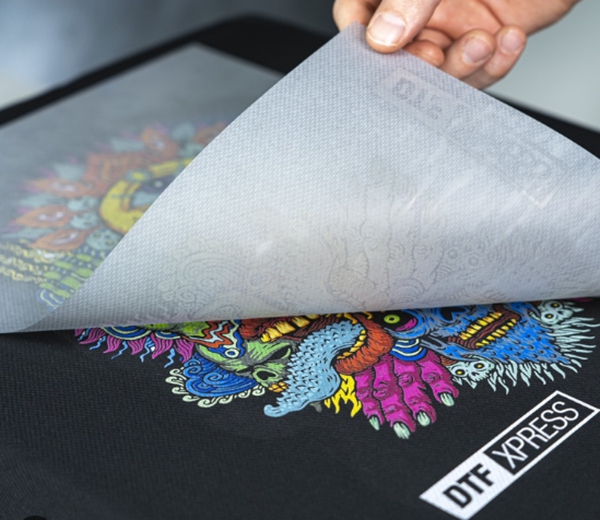 Nov 13,2025
Nov 13,2025
In the digital printing industry, DTF printing (Direct to Film printing) and UV DTF printing (UV Direct to Film printing) are two innovative transfer technologies that have rapidly emerged in recent years. While similar in name, both utilize the concept of "direct printing onto film," they differ significantly in their printing principles, materials used, applicable scenarios, and finished product effects. Understanding their differences is crucial for companies engaged in digital printing, custom crafts, or industrial decoration.

1. Technical Principles: Heat Curing vs. Light Curing
DTF printing stands for Direct to Film Printing, or "thermal transfer film printing." The printer applies a special pigment-based ink (CMYK + white ink) to a PET transfer film, which is then coated with hot-melt adhesive powder. Drying and heat-pressing securely transfer the design to the fabric surface. The core principle of this process is "heat curing": high temperatures bond the ink to the fabric, forming a soft, washable printed layer.
UV DTF printing, on the other hand, is based on the UV inkjet principle. Printing is done using UV ink containing photosensitive resin, layer by layer, on a specialized film. The print is then instantly cured with the help of a UV lamp, and then transferred to the surface via a "cold lamination" of film. This is a "light-curing" technology that requires no heat or adhesive powder. The cured pattern has a three-dimensional gloss and tactile feel, creating a relief-like texture.
2. Significant Differences in Materials and Equipment Used
DTF systems typically consist of a DTF printer, a powder dryer, and a heat press machine. The printing materials are DTF ink, PET film and hot-melt adhesive powder, and after printing, a heat transfer process is required. This process is lengthy but mature and stable.
UV DTF printing relies on UV flatbed or roll-to-roll printers and uses a double-layer A/B film. The A film carries the image, while the B film serves as the transfer medium. Application requires only light pressure for transfer, making operation simple and fumes-free. While the equipment is generally more expensive than a DTF system, it eliminates the heat press step.

3. Applicable Materials: Different Emphasis
The key difference between the two technologies lies in the transfer target:
DTF is primarily used for fabrics such as T-shirts, hats, canvas bags, and hoodies. It can create vibrant patterns on a variety of fibers, including cotton, polyester, and nylon, resulting in soft, breathable, and washable finishes.
UV DTF is suitable for both hard and smooth surfaces, including glass, metal, plastic, wood, leather, and acrylic. It can achieve three-dimensional, glossy, and even spot-varnish effects, and is commonly used on phone cases, cups, gifts, nameplates, and home decor.
In other words, DTF represents an innovation in textile printing, while UV DTF serves more decorative and industrial signage applications.
4. Comparison of Finished Product Results and Performance
From a visual and tactile perspective, DTF offers a soft, smooth finish with saturated colors and excellent ductility, making it suitable for wearable products. However, its weakness is poor adhesion to non-woven fabrics, making it prone to peeling. UV DTF offers a hard, scratch-resistant surface with an embossed texture, allowing for both matte and glossy finishes, as well as transparent layers. However, it lacks flexibility and can easily warp when applied to curved or elastic surfaces.
In terms of durability, DTF excels in washing and stretching. UV DTF, on the other hand, is known for its waterproof, scratch-resistant, and weather-resistant properties, making it suitable for long-term outdoor or decorative use.